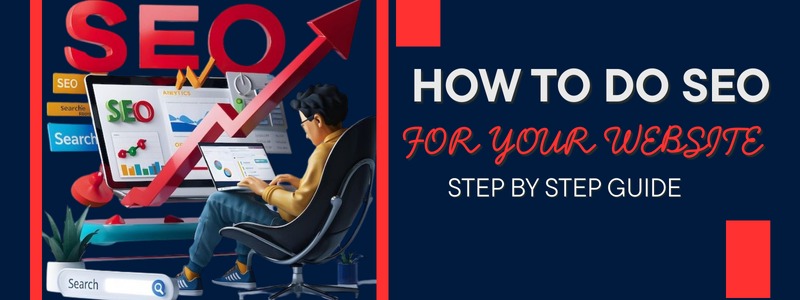SearchEngine Optimization (SEO) is a crucial strategy for any business that wants to
grow online. Whether you are a startup, an SME, or an established company,
proper SEO ensures your website ranks higher on Google, driving targeted
traffic and potential clients. Here’s a detailed step-by-step guide to doing
SEO for your website effectively.
1. Understand Your Audience & Goals
Before
starting SEO, define your target audience: who are they, what problems they
face, and what services they need. Set clear SEO goals such as increasing
traffic, generating leads, or boosting brand awareness. Analyze your
competitors to understand their keyword strategy and website structure.
2. Keyword Research
Keywords
are the backbone of SEO. Use tools like Google Keyword Planner, Ahrefs, or SEMrush to find
relevant keywords with high search volume and low competition. Focus on main keywords
for your primary pages and long-tail keywords for blog posts. Ensure keywords
are naturally integrated into your content.
3. On-Page SEO
·
Title Tags & Meta Descriptions: Include
primary keywords and make them appealing to boost clicks.
·
Headings (H1, H2, H3): Structure
your content logically and include relevant keywords.
·
Content Optimization: Publish
high-quality, original content that answers your audience’s questions.
·
Internal Linking: Connect
related pages to improve site navigation and search engine crawlability.
·
URL Structure: Use short,
descriptive URLs containing keywords.
·
Image Optimization: Add
descriptive alt text and compress images for faster loading.
4. Technical SEO
·
Ensure your site is mobile-friendly for Google’s mobile-first
indexing.
·
Improve website speed using caching, CDN, and image optimization.
·
Submit an XML sitemap to Google Search Console.
·
Use robots.txt to guide search engine bots.
·
Implement HTTPS to secure your site.
5. Content Strategy
Develop
a content calendar for blogs, guides, and videos. Create content that solves
real problems for your audience. Use FAQs and how-to guides to increase the chance of
featured snippets on Google.
6. Off-Page SEO
·
Build quality backlinks from authoritative sites in your
niche.
·
Guest posting, PR, and partnerships can improve online presence.
·
Engage on social media to drive traffic and shares.
·
Collect positive reviews on platforms like Google MyBusiness.
7. Local SEO (If Applicable)
For
local businesses, optimize your Google Business Profile, get citations in
directories, and encourage customer reviews to boost local rankings.
8. Monitor & Improve
Use
Google
Analytics and Search Console to track rankings, traffic, and
conversions. Update content, fix technical issues, and optimize continuously
based on performance data.
9. Continuous SEO Growth
SEO
is an ongoing process. Keep producing valuable content, building links, and
improving user experience. Stay updated with algorithm changes to maintain and
improve your rankings.
Pro
Tip: Focus on user intent, not just keywords. Ethical, white-hat
SEO is the key to sustainable traffic growth and real business results.
Conclusion:
A
well-executed SEO strategy attracts high-quality, targeted visitors to your website,
increasing the likelihood of conversions. By following this step-by-step guide,
you can systematically optimize your website and grow your online presence
effectively.
Your next customer is searching for you right now. Make sure they can find you.
Book
a free SEO consultation with Ksquare99 today!
Website
– https://ksquare99.com










